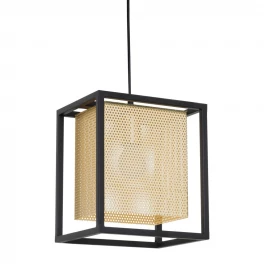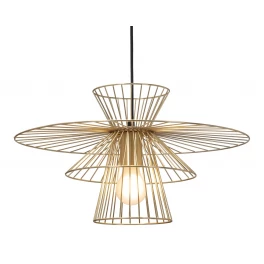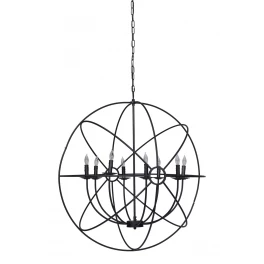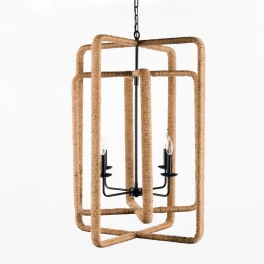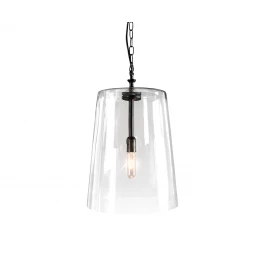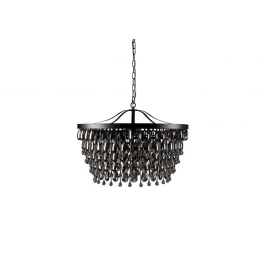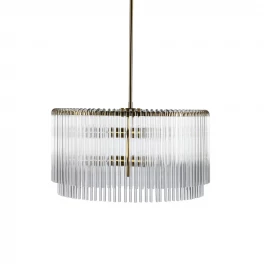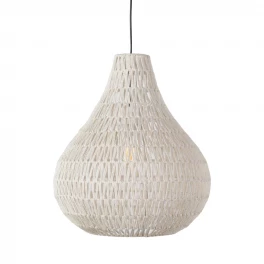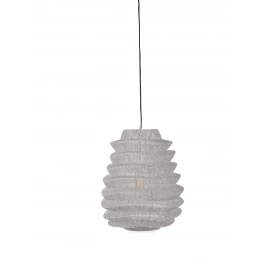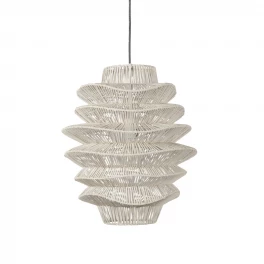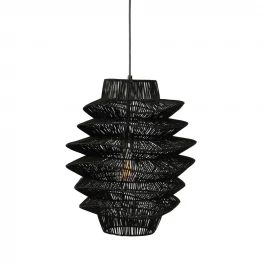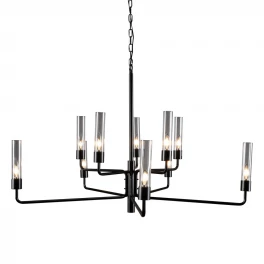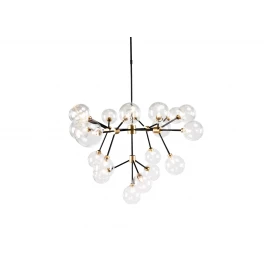How can you know whether a beamed ceiling is right for your interior design? If you don’t have one, should you add one? If you do have one, should you leave it?
Answering these questions is, of course, a matter of personal preference. However, you won’t get the interior design impact you’re going for you don’t know the criteria by which to evaluate the beam/no beam decision. So here you go.
Beams can go wrong (or right) in four ways: their size and shape, their placement (the space between the beams), their configuration, and their color.
Let’s take a look at how each of these beam characteristics can determine whether or not ceiling beams are adding to or detracting from your room design.
1. Beam Size and Shape
Ceiling beams come in all sorts of sizes and shapes. They can be thick.

Photo by Artazum on Shutterstock
They can be thin.

Photo by DGLimages on Shutterstock
They can be square or rectangular (which is most common):

Photo by alexandre zveiger on Shutterstock
Or they can be round (as in unhewn logs).

Photo by Artazum on Shutterstock
Determining the right size and shape is the easiest aspect of beam choice. Here are the general rules:
- Large beams belong in grander rooms with traditional or eclectic interior design style (see the first photo above).
- Thinner beams belong in small to medium-sized rooms with more modern or minimalistic style (see the second and third photos above).
- Log beams belong in large, rustic-style rooms (see fourth photo above).
What happens if you break these guidelines? You can turn what you intended to be interior design into interior clutter.

Photo by alexandre zveiger on Shutterstock
See how the beams in the room above seem to press the ceiling down toward the room? The more modern elements in the room can’t stand up to the weight of the beams above them. The result is the room looks cluttered with wood instead of uplifted by architectural interest.
2. Beam Placement
The distance between beams can make or break the effectiveness of a beamed ceiling. Too close together, and beams become oppressive.

Photo by KUPRYNENKO ANDRII on Shutterstock
Too far apart, and beams can end up looking like you had a couple old pieces of wood and didn’t know what to do with them, so you stored them on your ceiling.

Photo by yampi on Shutterstock
How do you find the Goldilocks place of “just right?”
There are no hard and fast numbers. But generally, the smaller the room, the more space you need between beams.

Photo by archideaphoto on Shutterstock
In the room above, the beams are too close together. Having almost half the number of beams would have lifted the ceiling and created a more spacious look.

Photo by archideaphoto on Shutterstock
The larger the room, the more beams you need.

Photo by Artazum on Shutterstock
In the room above, two more beams would create more balance in the space.
Getting the number of beams right is something you have to do by feel. If the room is “heavy,” you have too many beams. If your eye is drawn more to the expanse between the beams than to the beams themselves, you don’t have enough beams.
3. Beam Configuration
Beams can do more than march across the ceiling in soldier like lines. They can do all sorts of architectural tricks. They can square up in traditional coffered ceilings.
And they can create complex shapes in dropped-beam, vaulted ceiling designs.

Photo by Zastolskiy Victor on Shutterstock
What is right for your space? This question is easy. The higher your ceiling the more creative you can get with beam configuration. In fact, a vaulted ceiling cries out for a complex design. Extremely high ceilings can create a cold, vacuous feeling spaces. But if you play with beams, you turn on the warmth and turn cold into cozy, as you can see in the room above.
In terms of design type, the more regular and square your design is, like the coffered style or something similar, the more traditional your look will be. Unusual, more triangular designs have a modern aesthetic.
4. Beam Color
In the last section of this article, you’ll see the impact of matching your beam color to your ceiling color. (Hint: it’s generally done to downplay the beams.)
But without camouflaging your beams, you still have a lot of color choices. Do you go for darkly stained, lightly stained, or painted beams?

Photo by pics721 on Shutterstock
As with the other beam qualities, there are some general rules that usually have to do with room size. The more you contrast your beam color with your ceiling color or room décor, the more the beams will stand out and the more impact they’ll have on your room. If you have a large room, this is fine. If the room is small, you’ll end up overpowering it with your beams if you use too much contrast.
Beyond the dark and light question, there’s still the question of blending the beam color with the rest of the room’s décor. You don’t have to get too matchy-matchy and choose furniture or trim color that is the same as your beam color. But you do need to be in balance.

Photo by Breadmaker on Shutterstock
In the room above, the beams don’t match the furniture, but the color compliments the furniture and coordinates well with the other colors in the room.
The important thing to keep in mind is that beams aren’t just hanging out on the ceiling. They must dance with the rest of the room. You need to consider their color just as you would the color of your furniture, walls, or window coverings.
What To Do If You Have The Wrong Beams
If you already have beams that break the above rules in ways that create a less-than-pleasing look, you have two choices.
First, you can remove the old beams completely or install different ones. Given that modern beams can be created with faux materials, the cost of beamed ceilings isn’t as prohibitive as it used to be when beams were only made of wood.
Second, if even that cost is too much or you simply don’t want to go through the hassle, the easiest fix for intrusive beams is to paint them the same color as the ceiling.

Photo by Svet_Feo on Shutterstock
If you don’t want to paint the beams, you can install wood flooring on your ceiling in a color that matches your beams.

Photo by bmak on Adobe Stock
The risk with this look is evident in the above photo. If the room isn’t spacious enough to accommodate all that wood, or even if the room is large, if the ceiling is too low, the ceiling will squash the room and make it appear smaller than it is. If this is what you want, go for it.
And with that, now you know what you need to decide if “beaming up” is the right choice for your décor.




